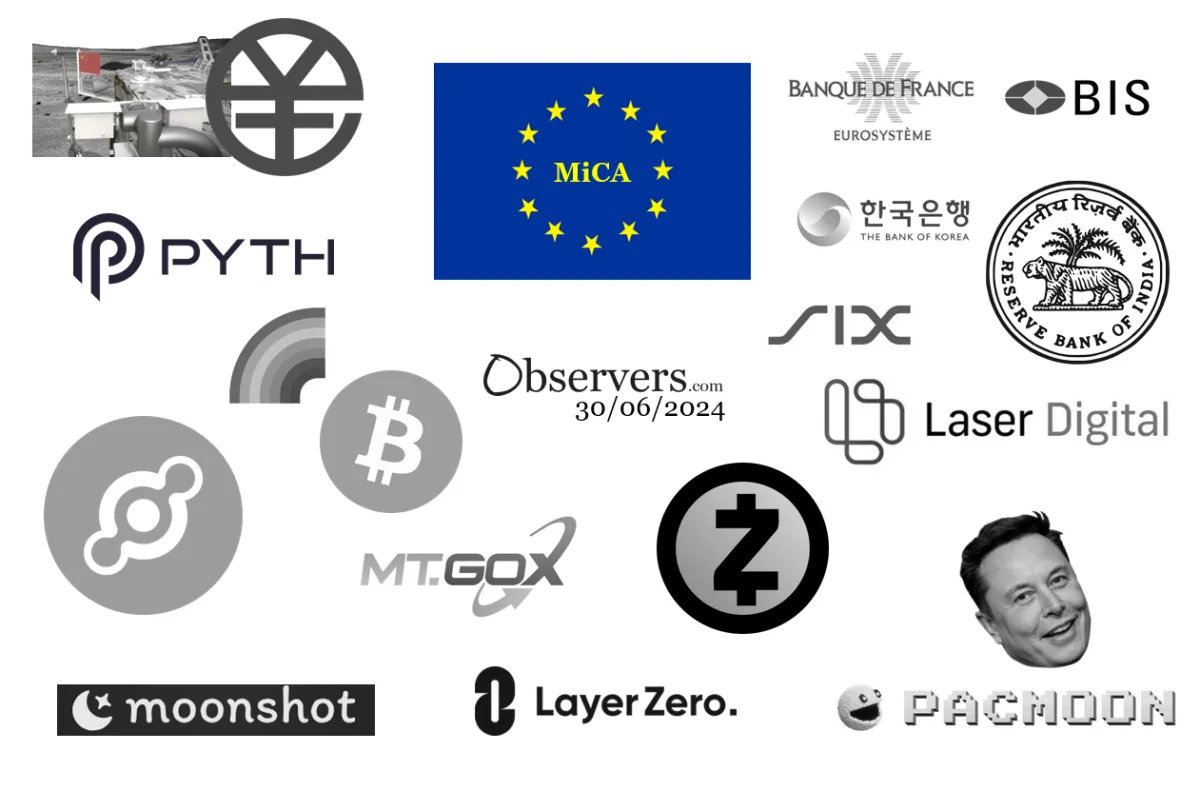
Some exciting news this week coming from China. The Chang’e-6 lunar module has successfully returned to Earth, marking a historic achievement by collecting the first-ever samples from the far side of the moon. This successful mission is a significant milestone for China's ambitious space program, with Zhang Kejian, head of the China National Space Administration (CNSA), confirming the mission’s complete success from the control room amid wild applause.
With the US hoping to land on the moon in 2026, and China committing to send humans by 2030, plus a myriad a private enterprises heading for the great grey rock, the new space race is upon us. But the question everyone seems to be grabbling with is – who really owns the moon?
While China and the U.S. continue to shoot for the moon, DEX Screener's new meme-coin launchpad, Moonshot, has also launched. The new platform which allows easy token creation on Solana, rapidly attracted nearly 200,000 tokens. Despite concerns over audit transparency, Moonshot has outpaced Pump.fun in coin creation, sparking mixed reactions: some see it as trivializing Solana, while others are jumping right in and embracing the trend.
And, where there are trends, there are celebrities... for better or for worse. They’re back in the mix promoting digital assets, despite past fines and bans for undisclosed endorsements. This time, it’s the ease of creating tokens that has led to a surge in celebrity-backed meme-coins, risking potential lawsuits and financial losses for followers.
One collapse that is finally compensating its creditors is Mt. Gox. The failed exchange announced that repayments in BTC and BCH will begin in early July. Past delays and fraud attempts have made creditors skeptical, and experts anticipate market turbulence as large sums of BTC are released.
Despite the volatility and fears surrounding Mt. Gox victims - and the recent offload of BTC by the German government - Bitcoin is holding on at around $60,000. The Crypto Fear & Greed Index has dropped to 40, but Bitcoin has grown into a $1.2 trillion asset, and the pot at the end of the much-loved Bitcoin Rainbow Price Chart holds some hope. The chart suggests bitcoin is still "cheap" and a bubble would only form at prices around $95,000.
A survey by Laser Digital reveals plenty of skepticism among Japan's institutional investment managers with only 25% viewing digital assets positively. But interestingly, around 54% plan to invest in crypto by 2027, with 66% willing to allocate 2-5% of their assets. Regulatory approval of ETFs in Japan could significantly boost investments.
The Helium Network, a decentralized platform for IoT devices, continues its U.S. expansion, now covering over 163 million people. Helium Mobile, combining cellular and hotspot coverage, is enhancing its network with initiatives like Boosted Locations and new partnerships, aiming to improve mobile connectivity and expand its decentralized infrastructure.
One company struggling with expansion is The Zcash Foundation, currently seeking community approval to continue its funding through block rewards as the current Dev Fund ends in late 2024. Despite pioneering privacy technology, Zcash faces regulatory challenges and slow adoption, prompting efforts to enhance compliance, usability, and market fit under new leadership.
And regulatory challenges ahead for stablecoins in the EU as MiCA comes into force. Already exchanges are delisting USDT and USDC for European users but the full impact of the regulations are still unclear.
A big debate online in crypto circles was sparked this week: When is an airdrop not exactly an airdrop? That was the question LayerZero Labs faced this week when launching its native token, ZRO. The June 20 launch used a "Proof-of-Donation" mechanism, whereby participants donate $0.10 per token to Protocol Guild, a philanthropic initiative. Traditionally, airdrops reward early adopters, but this system felt, to some vocal users, like a commission or a tax on that loyalty and left the foundation scrambling to defend its decision.
There is no forced donation, if you don't want to donate... simply don't claim. This is not something you own, it's something being offered.
— Bryan Pellegrino (臭企鹅) (@PrimordialAA) June 20, 2024
Pyth Network has deployed its pull oracle on Solana, enhancing reliability and increasing price feeds during network congestion. Unlike the traditional push model, the pull oracle updates prices on-chain on demand, reducing costs and allowing more frequent updates. Pyth, which has 95% of the Total Value Secured (TVS) on Solana, will transition entirely to the pull model by June 2024. Pyth ranks 4th in TVS market share but excels in securing 196 protocols, positioning it as a strong competitor to Chainlink in the oracle market.
Over to X (formerly twitter) where a decision to make likes anonymous has impacted meme-coin Pacmoon. Less than a month after releasing version two, Pacmoon was forced to move to version three due to this major change which disrupted their validator-based engagement model. Despite this setback, Pacmoon is committed to its success and has launched a content creation contest in collaboration with Animoca Brands' Mocaverse, called "PACMOCAVERSE," to keep the community engaged and ensure the meme-coin's longevity.
And finally, in our weekly Banking and CBDC roundup: the ECB’s and Banque de France’s progress reports the retail and wholesale CBDC works, demand for the e-rupee sinks in India, while China integrates e-CNY in the insurance payment systems, and updates from South Korea and

